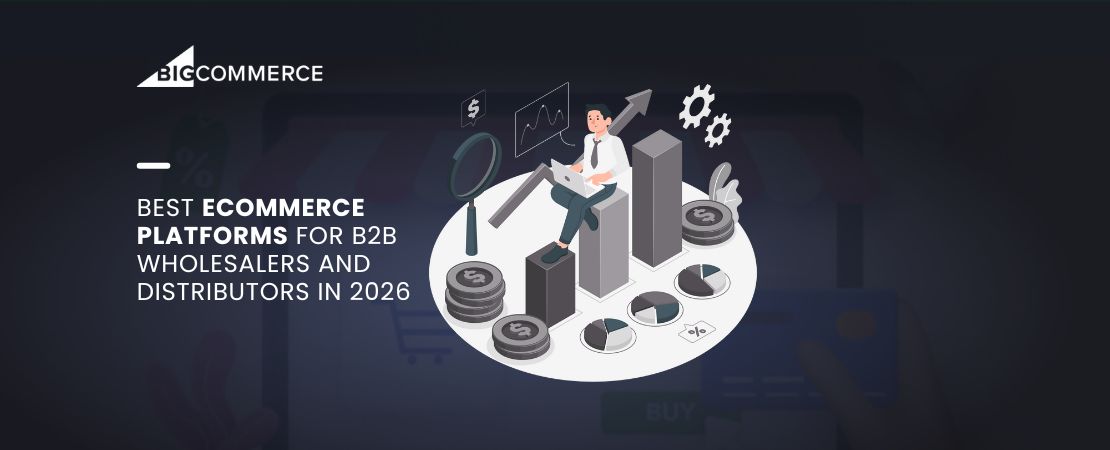BigCommerce is a popular e-commerce platform providing businesses with the tools and resources to sell products online. One of the key features of BigCommerce is its API (Application Programming Interface), which allows developers to build custom integrations with the platform to meet the unique needs of their businesses.
In this blog post, we will take a comprehensive look at the BigCommerce Product APIs (v2 and v3) and explore its various capabilities and limitations.
- BigCommerce got 140k+ live sites on their platform.
- Both API2 and API 3 can be used simultaneously within single software.
- Nearly 37+ percent of sites have migrated from Shopify to BigCommerce due to ease of API integrations.
What is the BigCommerce API?
The BigCommerce API product is a RESTful (Representational State Transfer) API that provides developers with programmatic access to various aspects of the BigCommerce platform, including products, customers, orders, and more.
With the BigCommerce product API, developers can build custom BigCommerce integration services that automate various processes, such as synchronizing product data with a company’s internal systems, processing orders, and handling customer data. These are also highly useful for creating BigCommerce headless commerce.
What is BigCommerce API v2
The BigCommerce API v2 was released in 2013 and was designed to provide developers with programmatic access to the BigCommerce platform. The API v2 uses a RESTful (Representational State Transfer) API and supports several programming languages, including PHP, Ruby, Python, and more.
The API v2 provided developers with endpoints for managing products, customers, orders, Bigcommerce App Development and other resources in their BigCommerce store.
Benefits of BigCommerce API V2
The following are the benefits of BigCommerce API V2:
Stability
BigCommerce API 2 has been around for several years and is a stable and reliable API. It has undergone extensive and well-documented testing, making it a dependable choice for developers. Additionally, as it is an older API, it has gone through many iterations, and as such, many of the bugs have been addressed, leading to a stable and reliable API. Only worry with this API for you would be how to hire a perfect BigCommerce developer and that’s about it!
Easier to Learn
API 2 has a simpler authentication and request/response structure compared to API 3, making it easier for developers to get started. Authentication for API 2 is based on a simple API key, and requests and responses use a straightforward JSON format. This makes it easier for developers with experience working with RESTful APIs to work with BigCommerce API 2.
Large Community
Because API 2 has been around for a while, a large community of developers have worked with it. This community has created many resources for developers, including sample code, tutorials, and forums, which makes it easier for developers to get help and find solutions to any issues they may encounter.
Good Documentation
BigCommerce API 2 has extensive documentation that is well organized and provides detailed information on all the endpoints, request and response formats, and authentication methods. This document includes examples and explanations, which makes it easier for developers to understand the API and how to use it.
Read Also BigCommerce API Documentation
Legacy Support
Although API 2 is no longer the recommended API for new projects, BigCommerce continues to provide BigCommerce maintenance support for it, which means that developers already using it can continue.
BigCommerce provides updates and bug fixes for API 2, so developers can continue to use it without worrying about compatibility issues or lack of support. This also means that developers who have built their applications around API 2 can continue to use it without having to invest resources in upgrading to a new API version.
What is BigCommerce API v3
The BigCommerce API v3 was released in 2020 and is the latest version of the API. The API v3 builds upon the capabilities of the v2 API, offering several new features and improvements. The API v3 uses a GraphQL (Graph Query Language) API and supports a wide range of programming languages, including PHP, Ruby, Python, and more.
The API v3 provides developers with endpoints for managing products, customers, orders, and other resources in their BigCommerce store, as well as new capabilities, such as real-time data updates, more granular access control, and more.
Benefits of BigCommerce API V3
The following are the benefits of API v3:
Improved Performance
BigCommerce API v3 is developed with improved performance in mind. It utilizes the latest technology and App/Web development practices to perform faster BigCommerce development services than previous versions. This means that developers can create applications that run more smoothly, are more responsive, and deliver better overall user experiences.
More Comprehensive
BigCommerce API v3 offers a more comprehensive set of endpoints than previous versions, which means that developers can access more data and functionality. This increased scope allows developers to create more sophisticated and powerful applications, such as complex eCommerce platforms, custom analytics dashboards, and much more.
Better Documentation than Other APIs
BigCommerce API v3 comes with improved documentation, making it easier for developers to understand how to use the API and access the needed data. This means developers can get up and running more quickly, spend less time on development and debugging, and create applications that better meet their needs and requirements.
Increased Flexibility
BigCommerce API v3 is designed to be more flexible than previous versions, meaning that it supports a broader range of use cases and allows developers to customize their applications more easily. This flexibility enables developers to create applications that are tailored to their specific needs and requirements, allowing for greater customization and better user experiences.
Improved Security
BigCommerce API v3 includes improved security features like OAuth 2.0 authentication and access tokens. These help developers build more secure applications protecting sensitive customer data and confidential information. This means that developers can build more secure applications, which in turn helps to build trust with customers and reduce the risk of data breaches and other security incidents.
Simplified Development
BigCommerce API v3 is designed to simplify development by providing more consistent and predictable responses. This consistency means that developers can spend less time debugging and more time building great applications. This can also provide great BigCommerce website design development options for your website.
By simplifying development, BigCommerce API v3 enables developers to create better application development in less time and with less effort, which ultimately leads to better user experiences and greater business success.
Read More: BigCommerce Checkout Customization
Getting Started with the BigCommerce API
To get started with the BigCommerce product API, you’ll need a BigCommerce store and a set of API credentials. These credentials consist of a client ID and an access token, which are used to authenticate your API requests.
Once you have your credentials, you can start making API calls to retrieve data from your BigCommerce store or to create, update, and delete products, customers, orders, and other resources.
Product V2 and V3 API
In this part, we’ll discuss the key differences between these two versions of the Product API and what they mean for developers.
API Endpoints
The most significant difference between BigCommerce Product API v2 and v3 is the endpoints they use to access the platform’s product data. While both versions of the uses use RESTful architecture, v2 uses legacy endpoints, while v3 uses the GraphQL endpoint.
GraphQL
One of the most significant advantages of using the BigCommerce Product API v3 is the ability to use GraphQL to query product data. GraphQL is a query language for APIs that provides a more efficient and flexible way to retrieve product data from the platform.
Request Limitations
BigCommerce Product API v3 has more stringent rate-limiting policies, and requests are restricted to 60 per minute per store, while the v2 API permits up to 400 requests per minute.
Resource Schema
The resource schema has been updated in BigCommerce Product API v3, allowing developers to access additional product information and metadata. This BigCommerce API Product also allows developers to interact with more resources and fields than v2.
Authentication
BigCommerce Product API v3 only supports OAuth authentication, which is more secure and provides better user privacy, than v2, which supports Basic Authentication, which is less secure.
Legacy API Features
This BigCommerce API product removes some features that were available in v2, including the ability to query and modify product options, modifiers, and custom fields.
Limitations of BigCommerce API v2 and API v3
API v2 is the older of the two, and while it is still supported, it is recommended that developers use API v3 for new projects. Some limitations of API v2 include the following:
Limited Functionality
API 2 was developed before some of the newer features of the BigCommerce platform were introduced. As a result, it has limited functionality compared to API 3. For example, it only supports some of the newer payment gateways and shipping methods.
Rate Limiting
API 2 has a rate limit of 1000 requests per hour, which can be a significant limitation for high-volume applications. If an application exceeds this limit, it will receive an HTTP 429 response and will have to wait before making additional requests.
Authentication
API 2 uses a legacy authentication system that is less secure than the OAuth2 authentication used by API 3. This means that developers must be careful when handling API keys and user credentials, as they can be more easily compromised
API 3 is the newer of the two APIs and offers several advantages over API 2, but it still has some limitations. These include:
Limited Webhook Support
API 3 supports webhooks, which are a way for an application to receive notifications when events occur in the BigCommerce store, such as when an order is placed, or a product is updated. However, the webhook system is limited compared to other platforms, and fewer event types are available.
Learning Curve
API 3 has a steeper learning curve than API 2 due to its more complex authentication and request/response structure. Developers must understand RESTful APIs and OAuth2 authentication well to use API 3 effectively.
Limited Access to Some Data
API 3 has limited access to some data that is available through the BigCommerce Control Panel. For example, it does not provide access to some customer data or the store’s tax settings. Developers may need to use a combination of API 2 and API 3 to access all the data they need.
Final Words
BigCommerce Product API v2 and v3 differ significantly in their architecture, capabilities, and limitations. Developers must choose the appropriate version based on their needs and the type of application they are developing. These 2 APIs are also the top reasons many developers suggest their client to opt for Bigcommerce migration.
Read Also How To Optimize Business With Bigcommerce B2B Bundle
If you require more granular data access, improved performance, and a more secure authentication process, BigCommerce Product API v3 is a better choice. However, if you are building an application that requires backward compatibility or needs to access data that has been removed from v3, BigCommerce Product API v2 may be more appropriate.




![How to Set Up BigCommerce DropShipping [2025 UPDATE]](https://ecommerce.folio3.com/blog/wp-content/uploads/2020/05/Blue-White-Modern-Marketing-Strategy-Blog-Banner.jpg)